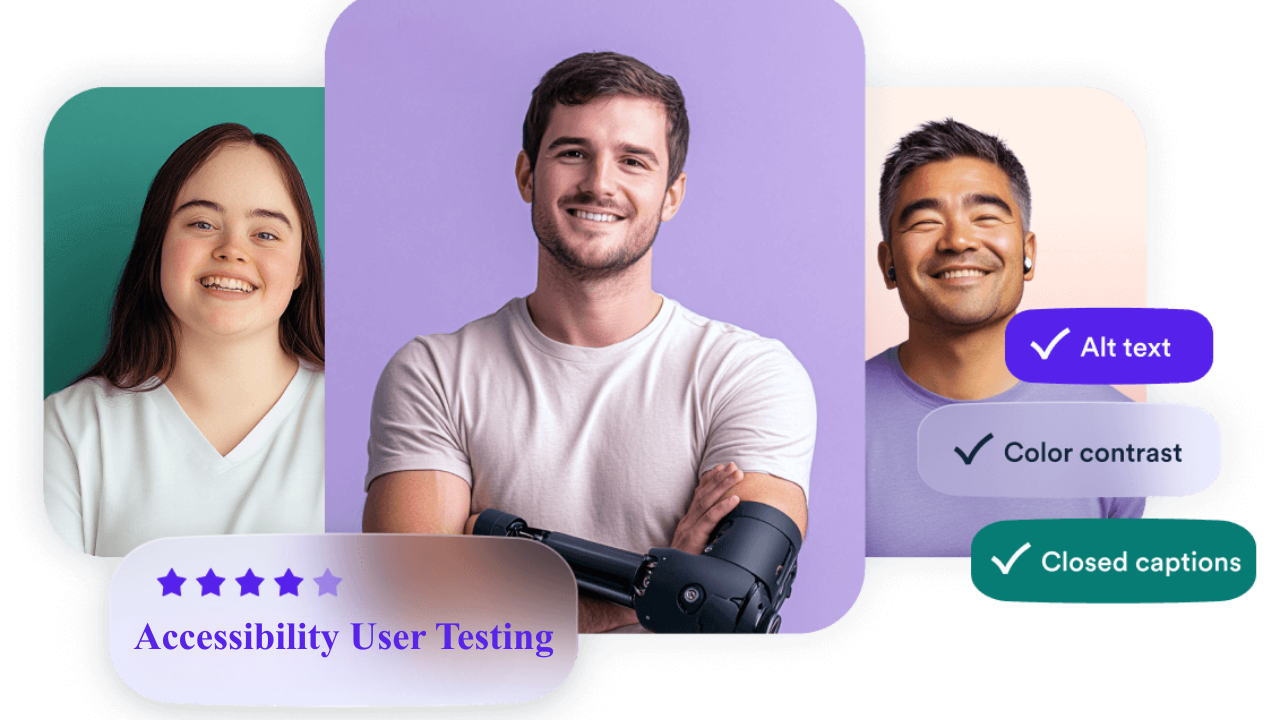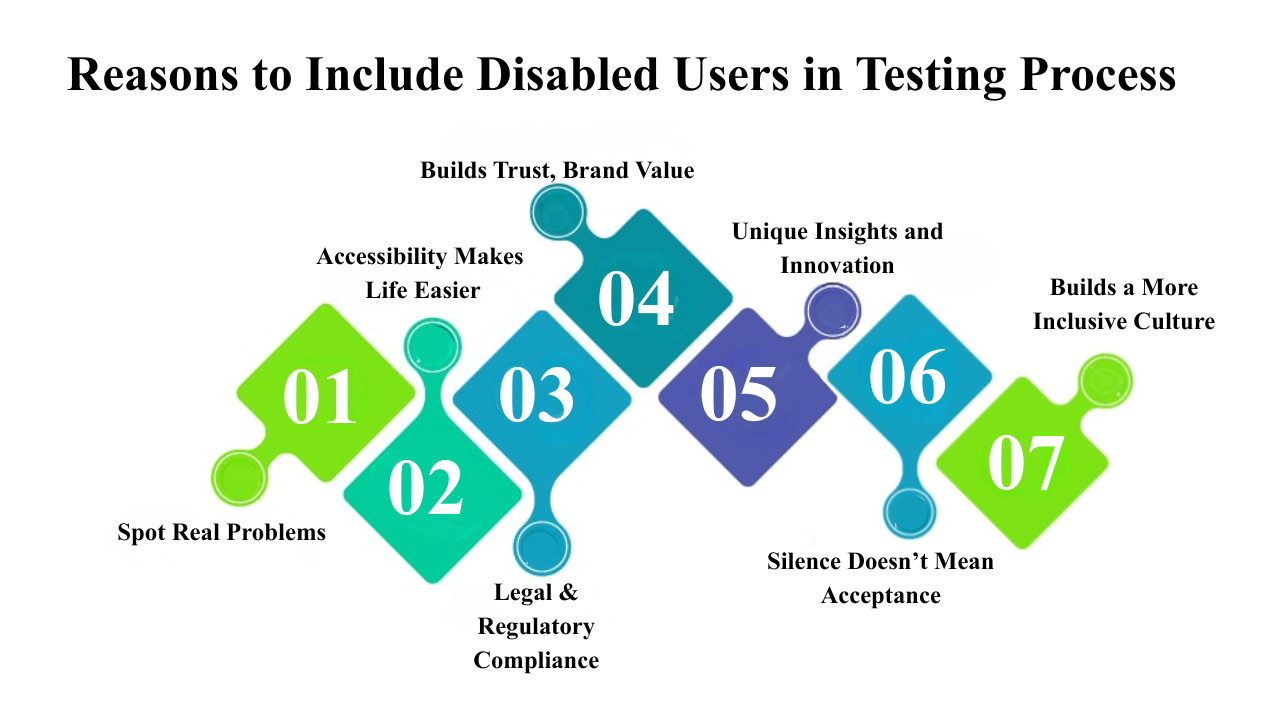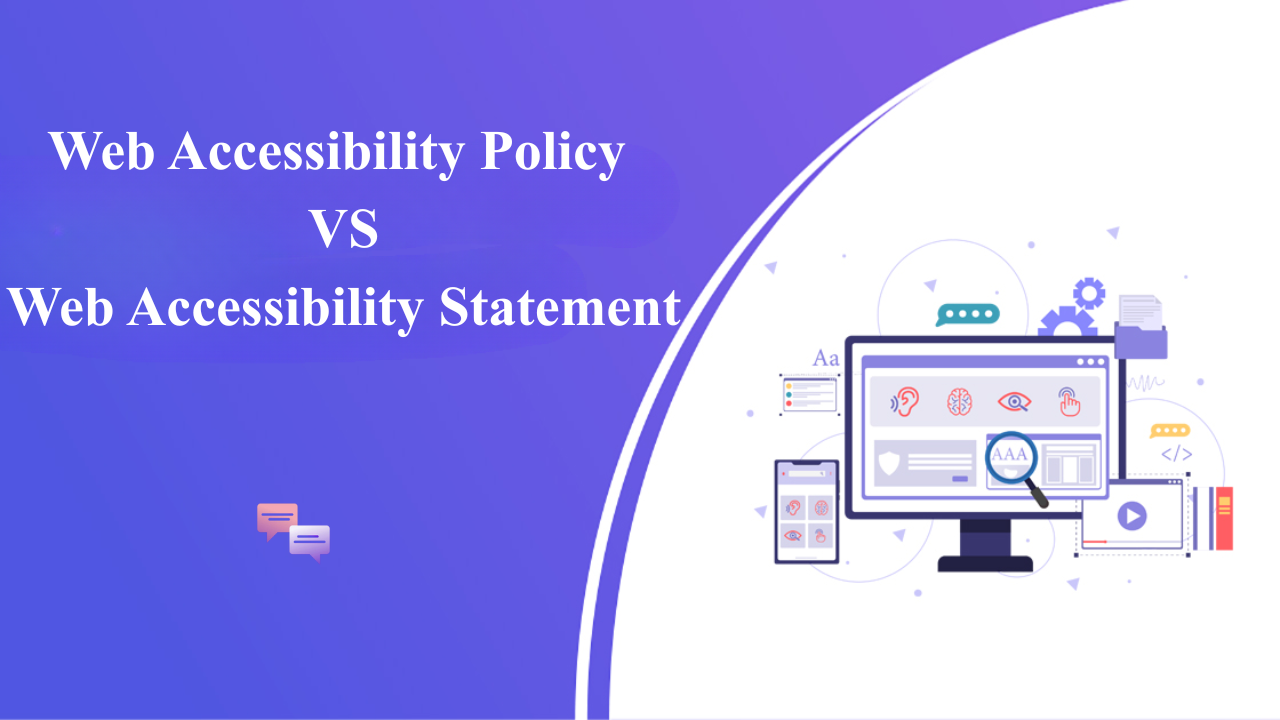Accessibility Resources
Manual vs Automated Accessibility Testing: What Designers Must Know
If you build websites or apps, you’ve probably noticed that everyone uses the internet differently. Some people click with a mouse. Some navigate only with a keyboard. Others rely on screen readers to hear the content. Many need bigger text or simple headings to stay oriented. Automated Accessibility testing helps you make sure all these users can move through your design without barriers.
There are two main ways to test accessibility: manual testing and automated testing. Many people try to compare them and decide which one is better. But they are different for a reason. Each method finds different problems and fills different gaps. If you want your work to be truly accessible, you need to understand how they differ and why both matter.
Inclusive Web Wins 2025 Best in Business Award for AI in Social Good
Inclusive Web is honoured to have won the 2025 Inc. Best In Business Awards in the category for Best AI Implementation for Social Good. This award acknowledges our efforts as one of the few companies that use Leverage technological advances to improve the Society at Large while continuing the expansion of our own company.
The award represents more than simply an acknowledgement of our work; it is also a celebration of many years of dedicated efforts by our team members to make the digital economy accessible to everyone. For individuals with disabilities, access to the Internet is often limited or non-existent and our goal has always been to change that.
Writing Accessible Content: UX Microcopy That Works for All
You want your words to actually help people, not slow them down or shut them out. Accessible UX microcopy does precisely that by guiding every user, including people with disabilities, through each step with clarity and respect.
When your content is easy to read, easy to follow, and friendly to assistive technology, you build trust. It helps more people complete what they came to do.
Accessible Typography & Font Guidelines for UI Designers
It is really challenging to read text that's too small, too light, or just not aligned well.
That's what happens when typography goes wrong. Millions of people struggle with poorly designed text every time they go online. Some can't see well. Others have dyslexia. Many are just trying to read on their phone while standing in bright sunlight.
Your job as a UI designer? Make sure everyone can actually read what you create. No fancy degrees required for this. You just need some wise choices and a bit of awareness about accessibility training for designers & typography guidelines.
Designing for Everyone: Accessibility Best Practices for UX/UI Designers
ADA stands for the Americans with Disabilities Act. It’s a law in the United States that says people with disabilities should be treated fairly and have the same chances as anyone else. It applies to public spaces, jobs, schools, and also to websites and online services.
So what does that mean for you? If your site isn’t accessible, people who are blind, deaf, or have trouble using a mouse could be shut out. If your business, organization, or agency serves the public, your website must be usable for everyone. Being ADA compliant helps protect you from legal problems, but it also helps you serve all your users well.
ADA Compliance Levels: Which One Your Site Must Hit Now
ADA stands for the Americans with Disabilities Act. It’s a law in the United States that says people with disabilities should be treated fairly and have the same chances as anyone else. It applies to public spaces, jobs, schools, and also to websites and online services.
So what does that mean for you? If your site isn’t accessible, people who are blind, deaf, or have trouble using a mouse could be shut out. If your business, organization, or agency serves the public, your website must be usable for everyone. Being ADA compliant helps protect you from legal problems, but it also helps you serve all your users well.
Types of Accessibility Every Website Designer Should Understand
When creating a site that is user-friendly, making it accessible to anyone to use is the primary goal. This means you must think about accessibility. Accessibility is the process of designing your website to ensure that people with different abilities can access it with ease. This doesn't only concern laws or rules; it's about fairness and respect.
This blog will cover the different kinds of accessibility that each web designer should be aware of. We'll discuss what accessibility is and who is in need of it, and what you can do to create a welcoming website.
Small Business Guide: 7 Accessibility Examples You Can Follow Today
If you run a small business, your website is where many people first meet you. You want everyone to have a smooth, easy experience when they visit your site. But here’s the thing: not everyone finds websites easy to use.
Some people have disabilities that make it hard to see, hear, or use a mouse. That’s why web accessibility user testing matters. It helps your website work well for all visitors.
This blog will discuss seven real small business websites doing this right. These examples can help you make your own site better for everyone who stops by.
ADA vs. WCAG: Key Differences You Should Know
If we talk about the digital world, the ADA does not specify any technical rules like what color contrast to use or how to write alt text. However, it states that businesses should make their digital spaces accessible and easy to use for everyone, including people with disabilities.
Over time, this has come to mean that websites offering products, services, or information to the public should be designed so all users can navigate and use them without barriers.
7 Reasons ADA Compliance Matters for Your Website
When a website is made to help people with disabilities, it becomes easier for everyone to use. A person who cannot see well can listen to the content through a screen reader, and someone who cannot use a mouse can move through pages using the keyboard.
These types of small changes still make a big impact. ADA-compliant websites help people with Disabilities to feel welcome rather than excluded. It allows everyone to visit, read, or shop on your website without hassle—and this is what we want for every website.
7 Key Accessibility Tests Every Website Should Undergo
Each user who browses, deserves a smooth experience. Unfortunately, for millions of people with disabilities, the web can still feel like a spot with obstacles, unreadable text, missing labels, inaccessible menus.
That’s why user accessibility testing isn’t just a technical requirement; it’s a commitment to equal access for all. In this article, we’ll explore seven key accessibility tests that help you build a website everyone can use. Let’s get started and know how to test a website for accessibility.
Top 10 Best Fonts Styles for Dyslexia
Most of us don’t think twice about fonts. We just open Word or Google Docs and start typing. But for someone with dyslexia, fonts can make a world of difference. The wrong font can make reading feel like a battle. It’s not just frustrating, it’s exhausting.
Dyslexia doesn’t change intelligence; it changes how the brain processes written words. And sometimes, the way text looks can make things a lot harder than it needs to be.
Accessibility Testing: Tips and Best Practices
Web accessibility testing is a procedure that allows assessing websites, applications and electronic materials to ensure that they can be accessed by individuals with various disabilities. It verifies that a product is accessible to people with disabilities with Web Content Accessibility Guidelines (WCAG) standards and legal standards such as the Americans with disabilities act (ADA) or the European Accessibility Act (EAA).
The idea is straightforward: open barriers in order to enable everybody to access digital products in a similar manner. It may imply that it can be possible to make text readable by screen readers, videos have captions, or forms can be filled in only by using a keyboard.
10 Real-World Benefits of Web Accessibility User Testing
In an online environment where access by all is no longer a luxury, web accessibility user testing is not only the most effective way to make your site usable, inclusive and legally compliant. At Inclusive Web, we think that there is no alternative to the audits and automatic checks other than seeing real people who use assistive technologies when using your digital product. The following are ten practical, actual real-life benefits of web accessibility testing of users, its purpose, the benefits of such accessibility testing, and how the benefits represent the food of accessible analysis.
The Ultimate Accessibility User Testing Guide
Can you recall when was the last time a website annoyed you? The reason could have been any – the text was too small to read, you couldn’t click a button, or maybe a form kept on showing errors without specifying the reason. This might have made you feel frustrated, right?
Now, think about those with disabilities. For them, these are not rare frustrations, in fact they have to deal with these everyday. Accessibility isn’t just a tech checklist. It’s about making sure everyone can use your site without stress. And when you fix those barriers, your website becomes easier for all your visitors.
7 Reasons to Include Disabled Users in Your Testing Process
As the demand for accessible websites, apps, and digital services grows, it's essential for businesses to ensure that everyone, regardless of ability, can easily access their content. Two terms that often come up in this context are web accessibility statement and accessibility policy. While they might seem similar, they have different purposes and are not interchangeable.
Both are tied to accessibility, involve communication, and are key to staying compliant with the law. However, they serve distinct roles. Understanding the difference can help your business meet ADA requirements, follow accessibility guidelines, and show your commitment to inclusion.
Web Accessibility Policy vs. Statement: What’s the Difference?
As the demand for accessible websites, apps, and digital services grows, it's essential for businesses to ensure that everyone, regardless of ability, can easily access their content. Two terms that often come up in this context are web accessibility statement and accessibility policy. While they might seem similar, they have different purposes and are not interchangeable.
Both are tied to accessibility, involve communication, and are key to staying compliant with the law. However, they serve distinct roles. Understanding the difference can help your business meet ADA requirements, follow accessibility guidelines, and show your commitment to inclusion.
10 Essential Accessibility Features Every Website Should Have
A site is also likely to be the initial interaction between a company and its clients in the digital world today. However, when not all of your viewers can access your site completely, what will you do? Individuals with disabilities, such as visual, auditory, motor, or cognitive disabilities, can be hindered by factors and fail to access your content. This is where web accessibility characteristics come into play.
7 Must-Have Tools for Testing Web Accessibility
Testing your website for accessibility is easier than most people think. You don't need a computer science degree or a massive budget. You don't need to understand complex legal requirements or memorize technical standards.
What you need are the right tools and a few minutes of your time. The best accessibility testing tools work like spell-checkers for your website. They scan your pages, highlight problems, and tell you exactly how to fix them. Some are completely free. Others cost less than your monthly coffee budget.
These seven tools will show you problems before your customers run into them. More importantly, they'll show you how to create a website that actually works for everyone who wants to use it.
Digital Accessibility: Why Your Business Needs It
What if you could expand your customer base by 15% with some simple website changes? That's exactly what happens when you make your digital products accessible to people with disabilities.
We're talking about over a billion potential customers worldwide. In the US alone, people with disabilities and their families control nearly half a trillion dollars in spending power. Yet most businesses accidentally lock these customers out with websites that don't work properly for everyone.




















